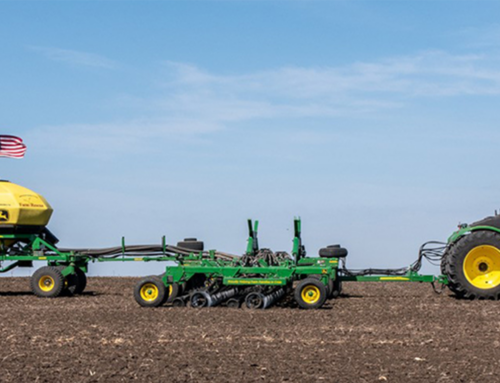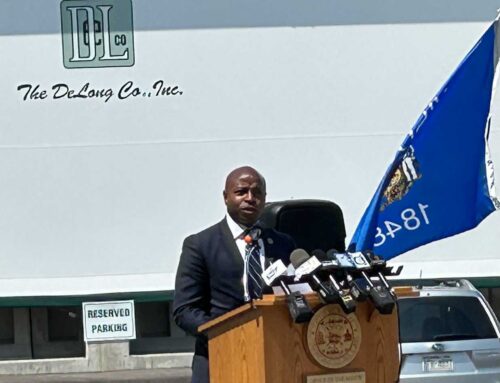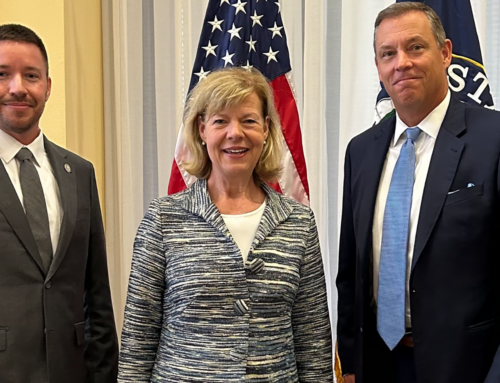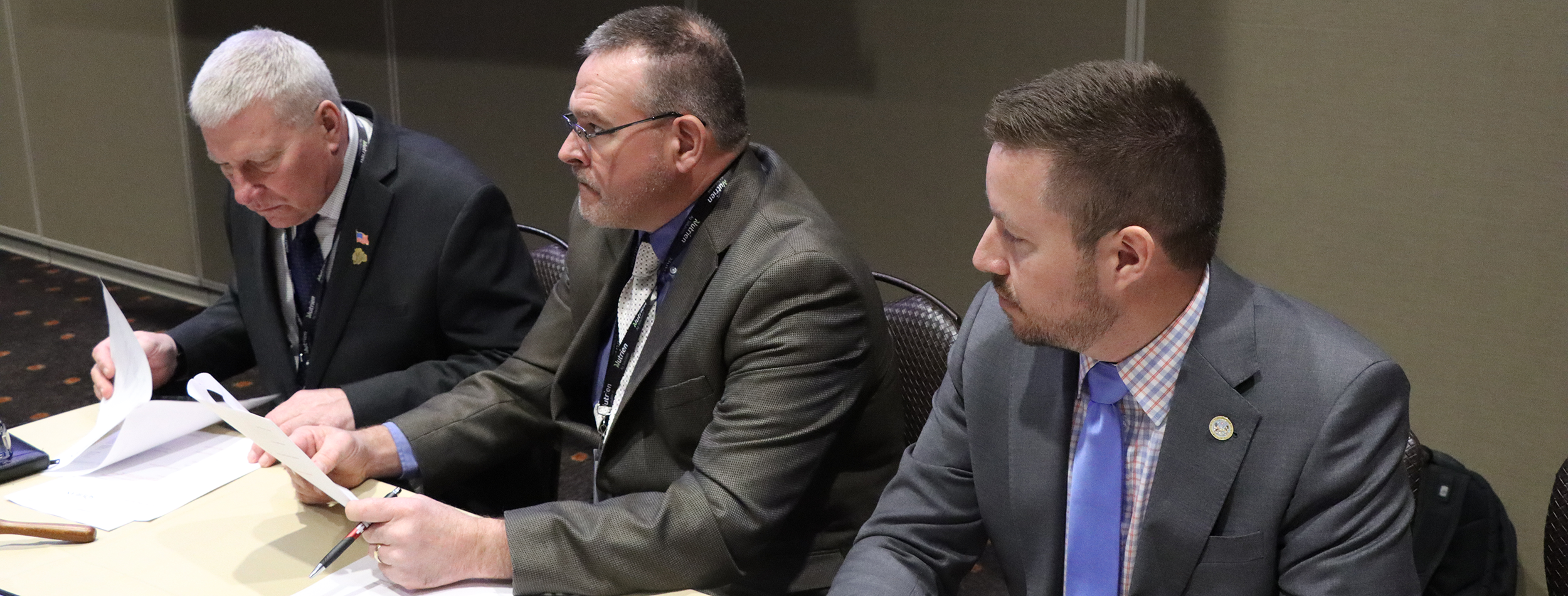
New ideas, new direction
Share This
WSP navigates tragedy to find new norm
You’ll have to excuse Wisconsin Soybean Marketing Board President Pat Mullooly if he mistakenly answers to the name Jake.
That’s because in the months after the passing of longtime Executive Director Robert “Bob” Karls, Mullooly spent a lot of late-night calls with then Wisconsin Soybean Association President Steve Trzebiatowski, who joked that his wife asked who he was on the phone with.
“It’s Pat. Pat from the Marketing Board,” he would tell her.
“I felt like he could have just said it’s Jake, from State Farm,” Mullooly said. As lighthearted as the joke between them is, the task in front of the two leaders and the directors of both boards wasn’t an easy one, leading to all those long calls between the two leaders.
“We realized quickly how little we knew about the day-to-day operations,” Trzebiatowski said. “When you have staff you can trust, you give them direction and empower them to make decisions on behalf of your organizations. When Bob passed, all that knowledge left with him.”
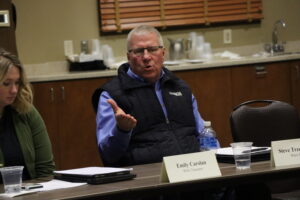
Former Wisconsin Soybean Association President Steve Trzebiatowski joked that Pat Mullooly had become his real-life “Jake, from StateFarm” guy due to the amount of times his wife would ask who he was talking with during the early months after Karls passing.
Through a search committee, the two boards found Ag Management Solutions, a Minnesota ag association management company owned by the Minnesota Soybean Growers Association and the Minnesota Soybean Research & Promotion Council.
“AMS has a robust understanding of how associations and checkoff organizations operate,” Mulloolly said. “They’ve helped us better understand our day-to-day operational needs, they’ve worked with us to help us better understand the soy checkoff and the compliance behind investing checkoff money, and they’re helping to reintroduce us to the soybean farmers we serve.”
Trzebiatowski echoed that sentiment.
“They’ve opened our eyes to what is possible,” he said. “We’ve been very appreciative of their support during this difficult time.”
AMS CEO Tom Slunecka appreciates the sentiment, but says it isn’t needed.
“Our organization is keenly aware of Wisconsin’s situation,” he said. “The thing that is important to understand is AMS is not the hero of this story. The men and women serving on the boards of WSA and WSMB are definitely our main characters, but ultimately, even they would tell you they are not the heroes either. When this story unfolds, it will be Wisconsin soybean farmers who benefit from sound policies that WSA works on, or from the rich resources provided by WSMB and the checkoff.”
New direction, new look
The Wisconsin Soybean Program is comprised of two organizations: WSA and WSMB. Both have different missions. WSA works on advocacy and politics, one place the checkoff cannot go. WSMB works on investing soybean checkoff money into research, new markets, new uses, promotion and education. Together, the two organizations have one goal: improve the profitability of soybean farmers.
“We’re trying to reintroduce ourselves to soybean farmers,” Mullooly said. “What we’re learning is we haven’t done a great job in separating the two organizations, which is really important.”
While progress goes slower than either would like, WSP launched a new website at wisoybean.org. The website serves both organizations, however each organization has its own “side” to the website. Some highlights of the new website:
• WSA’s online membership portal: New or renewing members can sign-up online
• Blog roll allows WSA and WSMB to share news as it occurs
• Refreshed director page with headshots and district maps
• First purchaser forms for remittance of the soy checkoff
In addition, the three logos of the organization were given a color makeover, helping to distinguish the three brands as separate from one another.
“I’m a big fan of the changes made to the WSA logo,” Trzebiatowski said. “The change just feels like a fresh start for our organization, which I think we all agree is needed.”
On the social media side, WSA and WSMB now have individual accounts for Facebook and Twitter, again distinguishing the differences between the two organizations.
“There was consensus among the board that we needed to make significant changes to the way we handle the promotion of our organization,” Mullooly said. “We’re moving in that direction now, and as summer comes along, we hope farmers will see more and more of the work WSMB is doing with the checkoff.”
On the staffing front, Adam Kask (Manager of Strategic Programs) and Kathryn Fitzsimmons (Policy Program Manager) are supporting the efforts of WSMB and WSA.
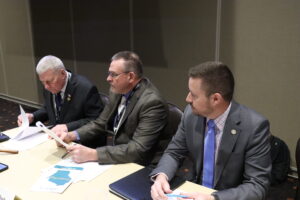
Steve Trzebiatowski (left) and Patrick Mullooly (center) were instrumental in keeping Wisconsin Soybean Program going after the death of their longtime Executive Director, Robert “Bob” Karls.
Not everything will change
While there have been a lot of changes with both organizations and plenty more to come, Mullooly wants Wisconsin soybean farmers to know that one thing won’t change.
“We’re going to continue to partner with Dr. Shawn Conley and the extension program at the University of Wisconsin,” Mullooly said. “Shawn and his team are valuable assets to the state of Wisconsin. We believe they are the best agronomy department in the country, and we’ll continue to invest in research that has practical use in Wisconsin for our soybean farmers.”
Conley and his team were among more than 17 projects approved for checkoff funding for 2023 to address agronomic and production issues facing the state’s nearly 15,000 soybean growers. The WSMB board heard proposals in January at its board meeting in conjunction with the Wisconsin Corn•Soy Expo.
Approved proposals included:
• Weed detection using UAV imagery
• Herbicide resistance
• White mold and phytophthora management
• Intercropping and double cropping soybeans and wheat
• Soybean Cyst Nematode testing and education
• Studying no-till soy growth and yield reductions
• Continuing Wisconsin’s Soybean Yield Contest, which has been held for more than a decade
“We’re excited about the projects that were funded,” Mullooly said.”
WSMB also elected officers, with no change coming to the current team. Mullooly remains as president, Andy Bensend is vice president and Johnathan Gibbs remains as treasurer/secretary.
On the WSA side, it’s business as usual now, which included officer elections at the Corn•Soy Expo. Sara Stelter from Wautoma was elected the new WSA president.
“I couldn’t be happier for her,” Trzebiatowski said. “She is an excellent advocate for Wisconsin farmers and brings veteran ideas to the board. She is a great person to lead this organization into the future.”
Joining Sara on a new-look executive team are Vice President Doug Rebout, Treasurer Matt Rehberg and Secretary Dan Linse.

